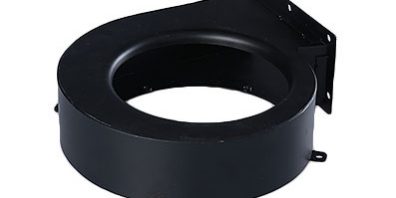The surface treatment processes of sheet metal parts mainly include the following:
**I. Spraying**
1. Powder spraying: – Process: The powder coating is uniformly attached to the surface of the sheet metal part by electrostatic spraying, and then baked and cured at a certain temperature to form a hard coating. – Characteristics: The coating has uniform thickness, strong adhesion, corrosion resistance, wear resistance, and rich colors. It is suitable for sheet metal parts of various shapes and sizes and can provide good decorative and protective properties. For example, powder spraying is often used for appliance housings, office furniture, etc.
2. Liquid spraying: – Process: Use a spray gun to atomize the liquid coating and spray it on the surface of the sheet metal part. After drying or curing, a coating is formed. – Characteristics: The color and gloss of the coating can be adjusted as needed. The coating quality is relatively high, and it can also have a good coverage effect on sheet metal parts with complex shapes. However, compared with powder spraying, its environmental friendliness may be slightly worse. It is often used for surface painting of automobiles, mechanical equipment, etc.
**II. Electroplating**
1. Galvanizing: – Process: Immerse the sheet metal part in an electroplating solution containing zinc ions. Through the action of direct current, zinc ions are deposited on the surface of the sheet metal part to form a galvanized layer. – Characteristics: It has good anti-corrosion properties and can effectively prevent sheet metal parts from rusting. The galvanized layer has a silver-white appearance and is relatively beautiful. In the atmospheric environment, the galvanized layer can provide long-term protection. For example, steel structural parts and hardware accessories for construction often use galvanizing treatment.
2. Chromium plating: – Process: Similar to galvanizing, put the sheet metal part into an electroplating solution containing chromium ions for electroplating. – Characteristics: The chromium-plated layer has high hardness and wear resistance, and at the same time has good reflectivity and decorative properties. It is often used in products such as automotive decorative parts and sanitary ware. However, the chromium plating process will cause certain environmental pollution.
**III. Oxidation**
1. Anodic oxidation: – Process: Mainly for aluminum and aluminum alloy sheet metal parts. Put them as anodes into an electrolyte solution. Through energization, a dense oxide film is formed on the aluminum surface. – Characteristics: The oxide film has high hardness and corrosion resistance. At the same time, various colors can be obtained through processes such as dyeing, and it has a good decorative effect. It is widely used in aluminum sheet metal parts in fields such as aerospace and electronic appliances.
2. Chemical oxidation: – Process: React with the surface of the sheet metal part through a chemical solution to generate an oxide film. – Characteristics: The process is simple and the cost is low, but the performance of the oxide film is relatively weak. It is often used for sheet metal parts with low protection requirements.
**IV. Wire drawing**
1. Straight grain wire drawing: – Process: Use sandpaper or a wire drawing wheel to rub the surface of the sheet metal part in a certain direction to form a straight texture. – Characteristics: It makes the surface of the sheet metal part have a unique texture and luster, and increases the aesthetics of the product. It is often used for stainless steel products, electronic product casings, etc.
2. Random grain wire drawing: – Process: Use an irregular friction method to generate texture on the surface of the sheet metal part. – Characteristics: The texture is more natural and random, and has a unique decorative effect.
**V. Polishing**
1. Mechanical polishing: – Process: Through the high-speed rotation of the polishing wheel on the polishing machine, the surface of the sheet metal part is polished to make it smooth and flat. – Characteristics: It can remove scratches, oxide layers and other defects on the surface of the sheet metal part and improve the surface finish. However, for sheet metal parts with complex shapes, there may be problems of uneven polishing. 2. Chemical polishing: – Process: Use a chemical solution to corrode and dissolve the surface of the sheet metal part to make it smooth. – Characteristics: The operation is simple and can handle sheet metal parts with complex shapes. However, it is necessary to pay attention to controlling the concentration of the chemical solution and the treatment time to avoid excessive corrosion of the sheet metal part.






